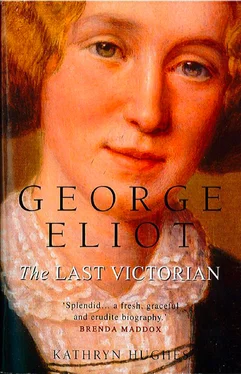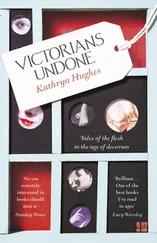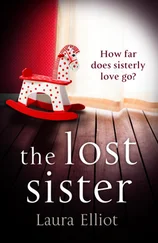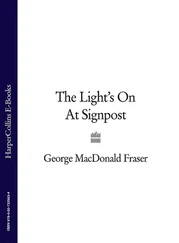While disenchantment with Victorianism led readers to George Eliot, George Eliot’s advice to them was that they should remain Victorians. Despite the ruptures of the speedy present, Eliot believed that it was possible, indeed essential, that her readers stay within the parameters of the ‘working-day world’ – a phrase that would stand at the heart of her philosophy. She would not champion an oppositional culture, in which people put themselves outside the ordinary social and human networks which both nurtured and frustrated them. From Darwin she took not just the radical implications (we are all monkeys, there is probably no God), but the conservative ones too. Societies evolve over thousands of years; change – if it is to work – must come gradually and from within. Opting out into political, religious or feminist Utopias will not do. Eliot’s novels show people how they can deal with the pain of being a Victorian by remaining one. Hence all those low-key endings which have embarrassed feminists and radicals for over a century. Dorothea’s ardent nature is pressed into small and localised service as an MP’s wife, Romola’s phenomenal erudition is set aside for her duties as a sick-nurse, Dinah gives up her lay preaching to become a mother.
Eliot’s insistence on making her characters stay inside the community, acknowledge the status quo , give up fantasies about the ballot, behave as if there is a God (even if there isn’t) bewildered her peers. Feminist and radical friends assumed that a woman who lived with a married man, who had broken with her family over religion, who was one of the highest-earning women in Britain, must surely be encouraging others to do the same. And when they found that she did not want the vote for women, that she felt remote from Girton and that she sometimes even went to church, they felt baffled and betrayed.
What Eliot’s critics missed was that she was no reactionary, desperately trying to hold back the moment when High Victorianism would crumble. Right from her earliest fictions, from the days of Adam Bede in 1859, she had understood her culture’s fragility, as well as its enduring strengths. None the less, she believed in the Victorian project, that it was possible for mankind to move forward towards a place or time that was in some way better. This would only happen by a slow process of development during which men and women embraced their doubts, accepted that there would be loss as well as gain, and took their enlarged vision and diminished expectations back into the everyday struggle. In Daniel Deronda , Eliot’s penultimate book and last proper novel, she shows how this new Victorianism, projected on to a Palestinian Jewish homeland, might look and sound. Although it will cohere around a particular social, geographic and religious culture, it will acknowledge other centres and identities. It will know and honour its own past, while anticipating a future which is radically different. By being sure of its own voice, it will be able to listen attentively to those of others.
It was Eliot’s adult reading of Wordsworth and Scott that instilled in her the conviction that ‘A human life, I think, should be well rooted in some spot of a native land … a spot where the definiteness of early memories may be inwrought with affection.’ 5 But it was during her earliest years, as she accompanied her father around the Arbury estate in his pony trap, that she fell deeply in love with the Midlands countryside. Her ‘spot’ was Warwickshire, the midmost county of England. Uniquely, the landscape was neither agricultural nor industrial, but a patchwork of both. In a stunning Introduction to Felix Holt, The Radical , George Eliot used the device of a stagecoach thundering across the Midlands on the eve of the 1832 Reform Act to describe a countryside where the old and new sit companionably side by side.
In these midland districts the traveller passed rapidly from one phase of English life to another: after looking down on a village dingy with coal-dust, noisy with the shaking of looms, he might skirt a parish all of fields, high hedges, and deep-rutted lanes; after the coach had rattled over the pavement of a manufacturing town, the scene of riots and trades-union meetings, it would take him in another ten minutes into a rural region, where the neighbourhood of the town was only felt in the advantages of a near market for corn, cheese, and hay. 6
Mary Anne’s early life, contained within the four walls of Griff farmhouse, where her family moved early in 1820, still belonged securely to the agricultural ‘phase of English life’ and was pegged to the daily and seasonal demands of a mixed dairy and arable farm. Although there were male labourers to do the heavy work and female servants to help in the house, much of the responsibility was shouldered by the Evans family itself. Like many of the farmers’ wives who appear in Eliot’s books, Mrs Evans took particular pride in her dairy, running it as carefully as Mrs Poyser in Adam Bede , who continually frets about low milk yields and late churnings. Like the wealthy but practical Nancy Lammeter in Silas Marner , too, Mrs Evans and her two daughters had bulky, well-developed hands which ‘bore the traces of butter-making, cheese-crushing, and even still coarser work’. 7 Some years after George Eliot’s death, a rumour circulated in literary London that one of her hands was bigger than the other, thanks to years of turning the churn. It was a story which her brother Isaac, now gentrified by a fancy education, good marriage and several decades of high agricultural prices, hated to hear repeated.
The rhythms of agricultural life made themselves felt right through Mary Anne’s young adulthood. As a prickly, bookish seventeen-year-old left to run the farmhouse after her mother’s death, she railed against the fuss and bother of harvest supper and the hiring of new servants each Michaelmas. And yet the very depth of her adolescent alienation from this repetitive, witless way of life reveals how deeply it remained embedded in her. Thirty years on and established in a villa in London’s Regent’s Park, her first thought about the weather was always how it would affect the crops.
But life on the Arbury estate was no bucolic idyll. The Newdigate lands contained some of the richest coal deposits in the county. As she grew older, the fields in which Mary Anne played had names like Engine Close and Coal-pit Field. Lumps of coal lay casually amid the grass. At night the girl was kept awake by the chug-chug of the Newcomen engine pumping water out of the mine less than a mile from her home. The canal in which she and Isaac fished was busy with barges taking the coal to Coventry. And when Mary Anne accompanied her father on his regular visits to Mr Newdigate at Arbury Hall, she would have noticed the huge crack which cut across the gold-and-white ceiling of the magnificent great hall. Subsidence caused by the mine-working had dramatically marked a building whose elaborate refashioning only a generation before had come to stand for everything that was elegantly Arcadian about aristocratic life.
Nor did Mary Anne have to look very far to fit the uneven textures of the Arbury estate into the wider landscape. Most of the people in the scrappy hamlet of Griff were not farm labourers but miners. In the nearby villages people were mainly employed in cottage industries like nail making, ribbon weaving and framework knitting. The pale faces and twisted bodies of the handloom weavers struck Mary Anne as absolutely different from the Arbury farmers, a contrast she was to use later in suggesting the weaver Silas Marner’s alienation from his ruddy Raveloe neighbours.
Only a few miles along the road was Nuneaton, the market town where Mary Anne was soon to go to school. In her very first piece of fiction she describes the town – renamed Milby – as a place where intensive homeworking had already left its grimy mark: ‘The roads are black with coal-dust, the brick houses dingy with smoke; and at that time – the time of handloom weavers – every other cottage had a loom at its window, where you might see a pale, sickly-looking man or woman pressing a narrow chest against a board, and doing a sort of treadmill work with legs and arms.’ 8
Читать дальше












